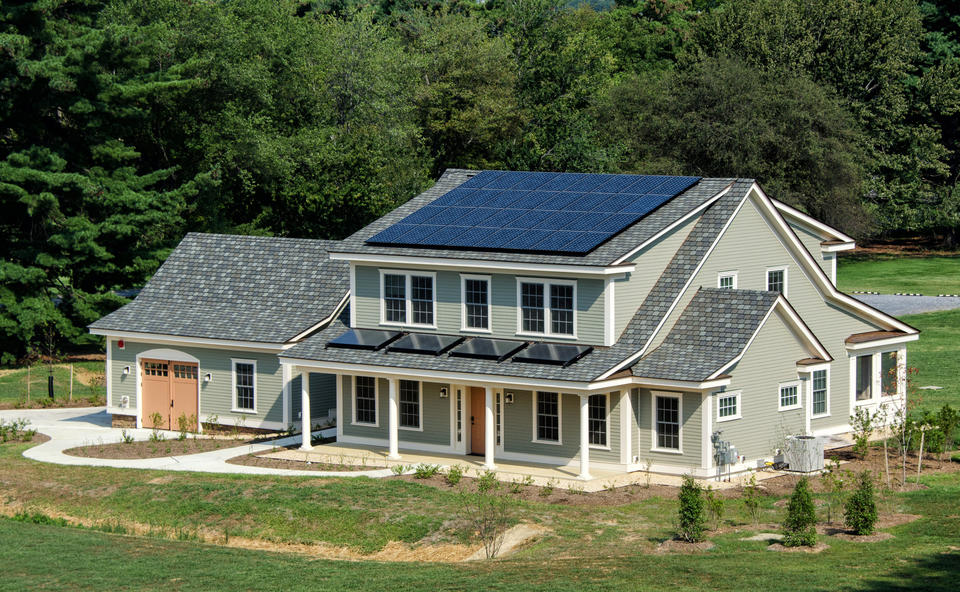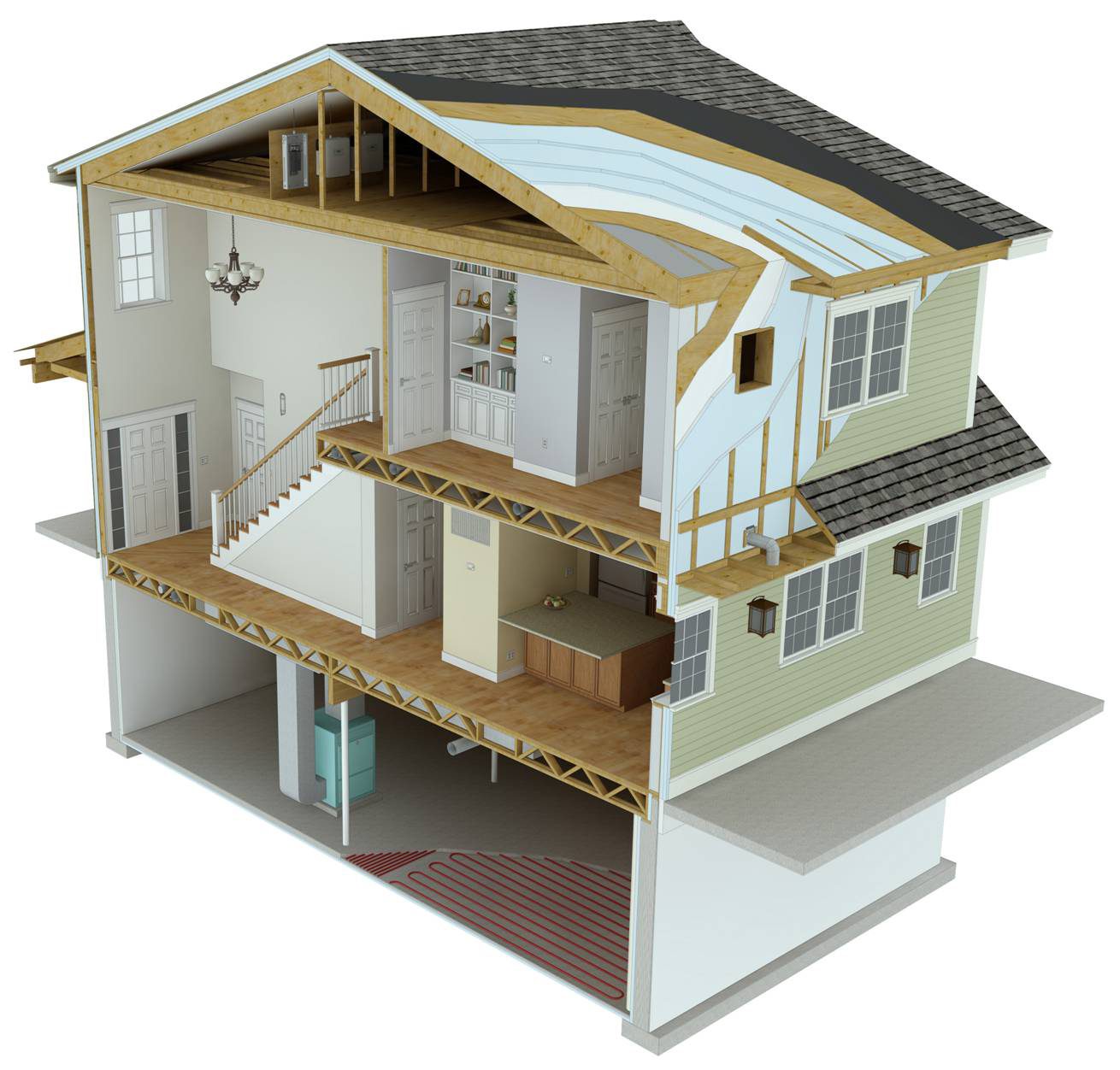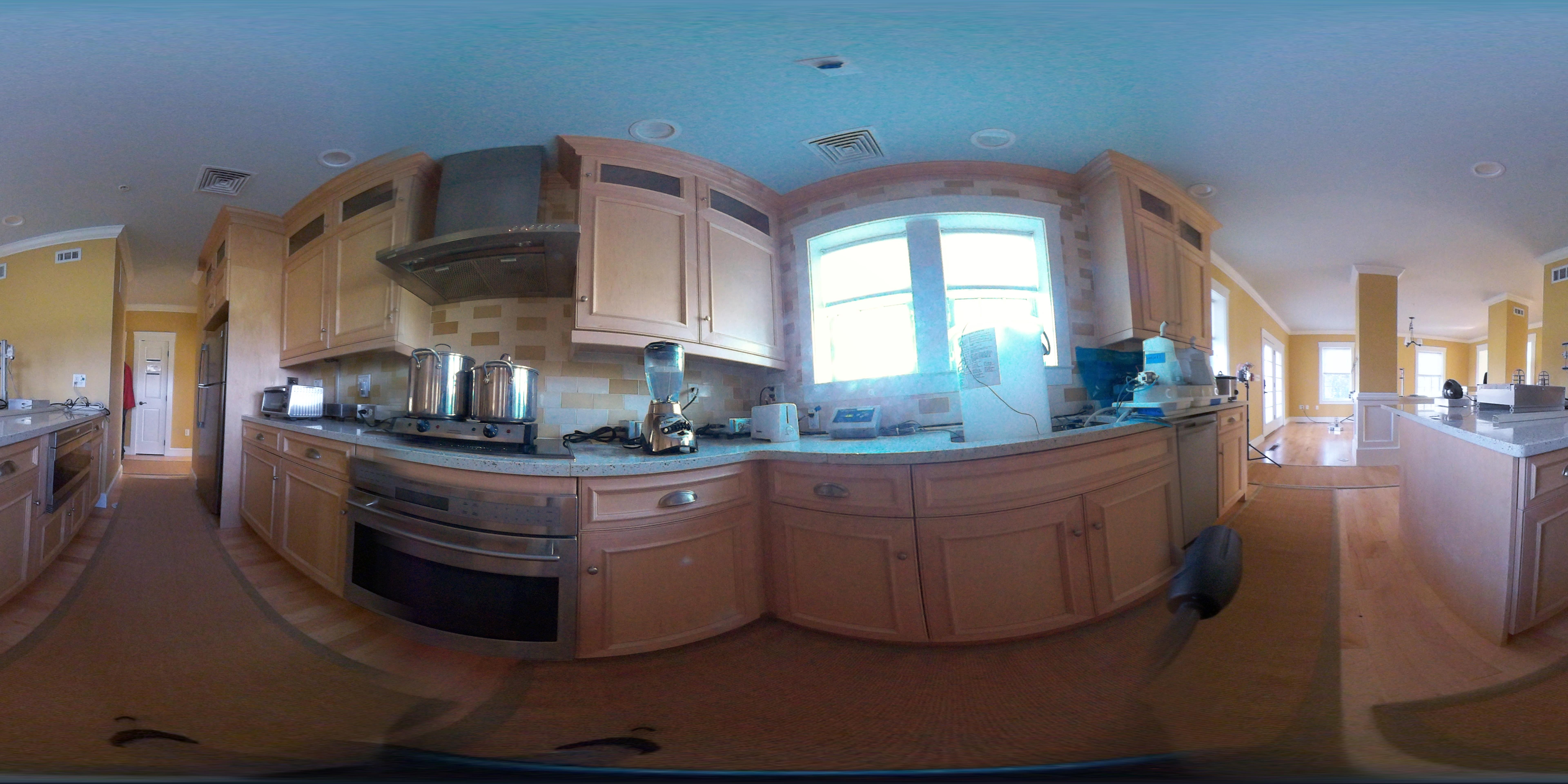Taking Measure
Just a Standard Blog

The Net-Zero Energy Residential Test Facility sits on the campus of the National Institute of Standards and Technology (NIST) in Gaithersburg, Md. The laboratory was designed to demonstrate that a net-zero energy house—one that produces as much energy as it consumes over the course of a year—can fit into any neighborhood. The facility allows researchers to test various high-efficiency and alternative energy systems, materials, and designs.
When people ask NIST employees what they do, we often rely on the somewhat nebulous term “measurement science.” To many in the technical community, NIST’s role in measurement science is clear because they are often surrounded by instruments that bear some sort of NIST-traceable calibration certificate.
NIST staff may be able to explain the painstaking work we do to realize basic measurement units like the meter or kelvin with such incredible accuracy and precision. Distance and temperature, electrical power and mass—those examples of measurement science make sense. But some may ask, “Why is there a laboratory on campus that looks like a house? Is that where the director lives?” Aside from making sure all the parts fit together, what does measurement science have to do with a house?
It turns out that the house on our Gaithersburg, Maryland, campus, the Net-Zero Energy Residential Test Facility (NZERTF), exemplifies the many unforeseen ways that measurement science impacts our lives. This facility, a 250 m2 (2,700 ft2) laboratory in the form of a single-family home, was completed in 2012, and we have been running experiments there since 2013. After five years of operation, it’s a good time to take stock of what has happened and where our team is headed.
Challenges in Energy and Buildings
Most of us in this country are very fortunate to be able to go home to a warm house at night, navigate around that house with artificial lighting, use an oven or stove to heat up the food that has been sitting in our refrigerators all day, and then clean our dishes with hot water that is available with a simple turn of a faucet. We may not put much thought into how those tasks are accomplished: of the fuel making its way from mines or wells to power plants, how these plants turn fuel into electricity, how the electricity makes its way across wires to our homes, and how we can simply plug devices into outlets in our walls to provide the services that we have come to expect. Thinking about those steps makes me realize the importance of using that energy in the most efficient manner. That goal is one of the driving motivations behind our research on energy use in buildings. Certainly, there are financial motivations, as the average U.S. household spent $1,856 per year on energy in 2015. With the population continuing to grow, how will we continue to provide that power to a larger number of households?
The focus on energy, however, ignores a big issue. Although it would be very easy to have a home that uses little to no energy, it probably wouldn’t be the most pleasant place to live. The measure we use to describe the desirability of indoor space is called “indoor environmental quality,” which encompasses thermal comfort, indoor air quality, lighting and acoustics. With so many people striving to decrease their home energy consumption, the challenge becomes how to maintain or even improve indoor environmental quality while using less energy. After all, why settle for adequate indoor environmental quality? Why not try to get great indoor environmental quality?
However, achieving these energy savings and indoor environmental quality improvements come at a cost. Our research objective is to find cost-effective approaches to achieving both goals.
Measurement Science in Building Science
It may seem easy to save energy in homes. We can replace inefficient light bulbs with LED bulbs, keep an eye on the thermostat, and buy efficient appliances when it’s time to replace them. We can focus on the “big three” residential energy end-uses (heating, air conditioning and water heating) by insulating and air-sealing our homes, reducing hot water use, and purchasing efficient furnaces, air conditioners and water heaters. But as our homes have become more efficient, some of the ways that they perform have changed. For example, in efficient homes with airtight walls and ceilings, the moisture that we generate indoors from cooking, showering and breathing tend to remain inside instead of leaking out through drafty windows and other openings. Therefore, we need to deal with that moisture or else the materials in the house may be damaged. That’s one of the ways that measurement science affects buildings: to better understand how they perform when we start to decrease energy consumption.
Another place where measurement science has helped spur advances in energy-efficient buildings is through metrics for conveying energy use to consumers. Think about the last time you bought a refrigerator or other appliance. You may have noticed the large yellow “Energy Guide” sticker featured prominently on the unit that gives you an estimate of its energy usage and cost to operate over the course of a year. These numbers can help you decide whether a slightly higher price will lead to utility cost savings over time. But where do those numbers come from? They derive from standardized measurement approaches, many of which were developed with assistance from NIST staff. It may seem easy to develop these estimates, but many decisions must be made when determining exactly how to test that unit. What should be the temperature and humidity of the room in which it sits? What sort of demands should be put on the appliance to mimic typical usage? How long must a test be run to adequately estimate its energy usage? How can the results of that short test be translated into an estimate of yearly energy usage? Those yellow Energy Guide labels are a product of measurement science research to define how to properly measure energy usage.

No matter how much research we conduct to perfect those test methods, however, energy usage in a laboratory inevitably varies from that seen in the field. Laboratory tests are designed to be representative of performance in the field, but crazy things happen when equipment is actually installed. Enter the Net-Zero Energy Residential Test Facility. The beauty of this facility is that we’re able to understand how installed equipment actually performs when used by people, albeit well-controlled, simulated ones. This latter feature is key: While it’s important to study how equipment performs under real conditions, it’s virtually impossible to totally account for the random activities of people. The NZERTF allows us to see if those laboratory test methods are capturing the key factors that influence behavior in the field. But the utility of the NZERTF goes even further. As homes become more precisely engineered to deliver desired energy and indoor environmental quality performance, suddenly the interactions between equipment become more important. With proper measurements, we can figure out how these systems are related in hopes of optimizing the entire system.
Initial Phase
After the facility was completed in 2012, we installed over 400 sensors as well as a virtual “family.” This family, which consists of devices that mimic the bodies and behavior of two adults and two children, give off heat and moisture, cook food, turn on appliances, and use water just as real live occupants would. With everything installed and our family moved in, we were ready to run our first year-long test to demonstrate net-zero energy use.
Going into this demonstration, I admittedly was feeling rather confident. I knew that the building was designed very well and that we had paid close attention to every detail of its construction. Computer modeling suggested that the photovoltaic (solar power) system would generate more than enough electricity to make up for the energy the house and its virtual occupants used.
About halfway into this demonstration phase, however, I started to appreciate—or maybe dread—all that data we were getting from the house. Bitterly cold weather, a layer of snow that had covered the photovoltaic arrays for a month, and a dubious control scheme in the heat pump’s thermostat put the goal of net-zero energy usage for the year in jeopardy; but, fortunately, the house ended up producing 7 percent more electricity than it consumed. Noticing some key operational aspects that could be altered to improve performance, we made some small changes and ran the test again. During the second year, the house produced 18 percent more energy than it consumed. While better weather helped a bit, we were thrilled to see that the slight operational shifts we made accounted for the bulk of the difference.

Recent Work
We’ve since moved on from these initial pilot studies to focus on alternative configurations of the house. In our recent tests, we have had to push the limits of what we can measure. We’re not necessarily going to the lengths you have to go to measure time to within one second in 300 million years, but we are breaking ground in the development of the methodology to accurately assess building performance. Take, for example, comparing heat pump systems. We wanted to compare them under similar operating conditions. But, with weather constantly changing, especially in the variable climate of Gaithersburg, Maryland, how should we properly run each system to get the proper data? What data should we collect to properly assess performance? How often should we collect the data? How do we accurately measure vague concepts such as “thermal comfort”? The team developed the measurement methodology to assess these issues, so what was the result?
While final analysis is ongoing, let me mention two key findings: 1) Laboratory test results don’t always match performance in the field, and 2) Your gut feelings about how one system should perform aren’t always realized in the field. Overall, equipment ratings and our knowledge of how these systems operated suggested that different heat pump units would have different efficiencies, deliver varying levels of thermal comfort, and have drastically different sound levels. The results: The two heat pumps were nearly identical in performance! While some researchers may have been disappointed in such an outcome, we were excited to see that our careful measurements had been able to suss out this counterintuitive conclusion.
Additional recent work has focused on other aspects of the house. For example, think about how you need to wait for the hot water to arrive at the faucet when you want to take a shower. Do you realize that this wait wastes water and energy? Even in the NZERTF, where the plumbing system was carefully designed, over 10 percent of the energy delivered by the water heater is lost in the plumbing system! We are comparing these results to those that would occur in more typical homes with the aim of identifying ways to minimize water and energy loss through alternative piping arrangements and placement of water heaters.
As previously mentioned, some of the most interesting work has involved system interactions. The house is so airtight that it requires fans to bring in outdoor air. Doing so impacts the heating and cooling energy usage, but measurements showed that eliminating this ventilation leads to very high levels of airborne contaminants, such as formaldehyde, in the home. Studies like these, which allow us to measure the impact of different equipment and operational schemes, make this test facility valuable to the building community.
Moving Forward & Making an Impact
Moving forward, we’ve collected a lot of great ideas from the building community that are helping to guide our research. And we haven’t tested all the house’s systems yet, or even turned them all on! One thing we’ll be looking at in the future, for example, are ground-source heat pump systems that promise to be much more efficient than conventional heat pumps and air conditioners because they use the Earth as a source of heating and cooling.
We’re also working to examine the impact of different ways to ventilate the house. We’re installing new water heating technologies that promise to further reduce home energy usage. And we’re looking at how to distribute air in low-energy homes. For instance, I’m sure you’ve noticed how your house is much hotter upstairs than downstairs; those issues may be even more dramatic as homes become more efficient, so we need to find new ways to distribute air. At the core of all this work will be novel measurement approaches that will shed light on how building systems perform in the field.
We often get the question, and it’s an important one, “This work is interesting, but why are you doing it?” We all want to make a difference. Finding ways to measure performance and, hence, to have a greater understanding of the advantages and disadvantages of certain approaches is vital in ensuring that our quest to reduce our energy bills does not have negative consequences. Likewise, we want to be able to properly capture the performance of systems beyond just energy cost, for example, by how they provide a comfortable and healthy indoor space. Our vision is to use results of this research to inform committees developing standards for residential buildings and to provide data to best inform designers and occupants of buildings.
I would be remiss if I didn’t mention another area where I feel that we have had an impact, albeit one not necessarily at the core of NIST’s mission. Since the house was constructed, we have provided tours to well over 10,000 people and counting. Tour participants have ranged from elementary school groups to members of Congress. I always enjoy giving these tours, as you can really see people trying to connect the dots to figure out how they could create a better indoor environment in their homes while also making them more energy efficient. Allowing people to see that these goals are achievable in a place that looks and feels like a traditional home has been incredibly rewarding. And, from a personal perspective, I always get great questions during each tour and learn something new.
Finally, I would like to say something about teamwork. In any research organization, people are often working on a niche problem in isolation. We at the NZERTF have had a different approach: to bring researchers from different disciplines together. In building research, those looking at heating and cooling systems don’t always interact with the experts in indoor contaminants, and the engineers don’t always work closely with economists to understand the financial implications of their work. We were fortunate to have assembled such an integrated team. It’s often said that the best work comes at the intersection of fields, and I would say that the NZERTF project has proved that to me. Our most interesting research results have come about when researchers from different disciplines are working together on a problem. We’ve been very fortunate to work on this team, and I’m sure that I’ll look back on this effort as one of the highlights of my career.
So, if you ever find yourself driving past the NIST Gaithersburg, Maryland, campus and see that house on the hill, appreciate that it’s not where the NIST director lives; instead, it’s just one more example of how measurement science is having a positive impact on our lives.






Thank you for this effort, and everything else your team does. This and use of SI units should be part of an exhibit at every science museum in the nation.